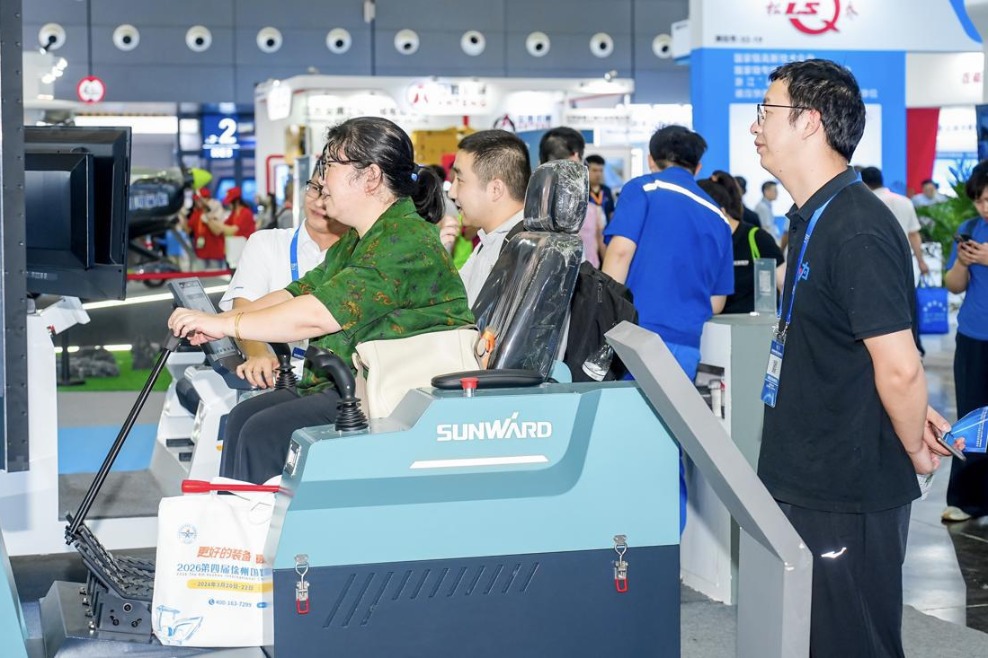Currency, trade, rate moves will shape economy


China's relatively strong currency, the renminbi, or yuan, was based on its good performance in its balance of payments in 2021. The ongoing COVID-19 pandemic across the globe and the marginal improvement of economic and trade relations between China and the United States were key factors contributing to capital inflows. And the seasonal foreign exchange settlement demand from the end of the last year to the Spring Festival provided strong support for the yuan exchange rate.
The foundation that supports the strong yuan exchange rate will not fade away quickly in 2022, and the exchange rate will act as a tool in balancing policy divergence between China and the US. The yuan may have higher flexibility to depreciate.
The strong exchange rate in 2021 was mainly affected by market supply and demand factors, which was supported by the improvement in the balance of payments situation, including an expanded goods trade surplus, narrowed services trade deficit, substantial growth in direct investment and continued portfolio investment inflows.
It is unclear how the pandemic might fare overseas in 2022, and the more transmissible Omicron variant may slow the pace of opening up offshore economies. Moreover, global distribution of vaccines is still highly unbalanced and the coronavirus could mutate further in low-income countries where vaccines are not widely available, creating uncertainty for follow-up pandemic prevention and control policies.
Under such circumstances, it is expected that China's services trade deficit will not expand significantly in 2022, and the process of reducing the trade surplus in goods will be gradual. So the current account surplus will still be supported at a high level. The large surplus in foreign direct investment may drop as the Chinese economy slows, and the surplus of portfolio investment may face certain downside pressure with narrowing spread between Chinese and US yields. But both will also be supported by China's supportive policies to expand opening-up.
The annual Central Economic Work Conference held in December has mapped out the priorities for this year's economic work. According to the conference, the country will grant foreign-funded enterprises national treatment, attract more investment from multinational companies and facilitate the early implementation of major foreign-invested projects.
In general, we believe that support from the balance of payments to the yuan exchange rate may soften in 2022. However, due to uncertainties surrounding the pandemic and support of China's expansion of high-level opening-up, the foundation that supports the strong exchange rate will not fade away quickly in 2022.
Notably, China has a large number of dollar bonds due in 2022, which will also impact the balance of payments.
If the yuan exchange rate enters a depreciation stage in 2022, the actual financing costs of Chinese companies' dollar bonds will increase. As most of such Chinese companies are real estate firms, this may be the straw that breaks the camel's back and bring further deterioration of overseas financing.
The weakening support from balance of payments will re-enhance the correlation between the yuan exchange rate and the US Dollar Index. As the index will still be supported by the US economic recovery and Fed hikes, it will put some pressure on the yuan exchange rate.
The appreciation of the renminbi in 2021 was mainly driven by supply and demand factors in the forex market. In 2022, with weakening market supply and demand-driven appreciation of the yuan exchange rate, the exchange rate may be pegged again to the US Dollar Index.
In 2022, US economic performance is likely to stand out among other economies. In addition, the normalization of the Fed's monetary policy has entered an accelerated stage, which means that the US Dollar Index still has a strong foundation.
Relations between China and the US remain the biggest risk to the yuan exchange rate. In 2022, the US may relax its rules on tariff exemptions and reduce tax rates on some key products, thereby driving further marginal improvement of Sino-US economic and trade relations. This expectation is also reflected in the current yuan exchange rate.
However, the recent US move to impose sanctions on many Chinese companies means that Sino-US relations are still less than optimal.
As the 2022 US midterm elections approach, US Democrats may again target China to divert attention from their internal contradictions and mobilize public support. By then, the yuan exchange rate may face risks and shocks.
In 2022, the yuan exchange rate may act as a tool in balancing policy divergences between China and the US. To free up more room to maneuver domestic monetary policy, the yuan might be allowed to have higher flexibility.
As of Dec 31, Fed funds futures have bet on three hikes this year.
According to the arrangement by the Central Economic Work Conference, prudent monetary policies should be flexible and appropriate. Considering employment pressure, pressure of the economy operating below its potential growth rate and pressure on the profit growth of private enterprises and some midstream and downstream industries, policymakers will ease their stance on monetary policy this year.
We expect that there may still be room for the People's Bank of China, the country's central bank, to cut the reserve requirement ratio by 1 to 1.5 percentage points this year, and there is still room for 10 to 15 basis point cut in interest rate (policy interest rates) in the event of increasing economic pressure. So the spread between Chinese and US yields will run to the alert level of 80 basis points, placing depreciation pressure on the yuan. Between the devaluation of the yuan and the "China-focused" monetary policy, the policy choice is already clear as the central bank required financial institutions to lift RRRs for foreign currency deposits in December.
Zhong is chief economist with Ping An Securities, and Zhang is a senior analyst with Ping An Securities.
The views don't necessarily reflect those of China Daily.




































